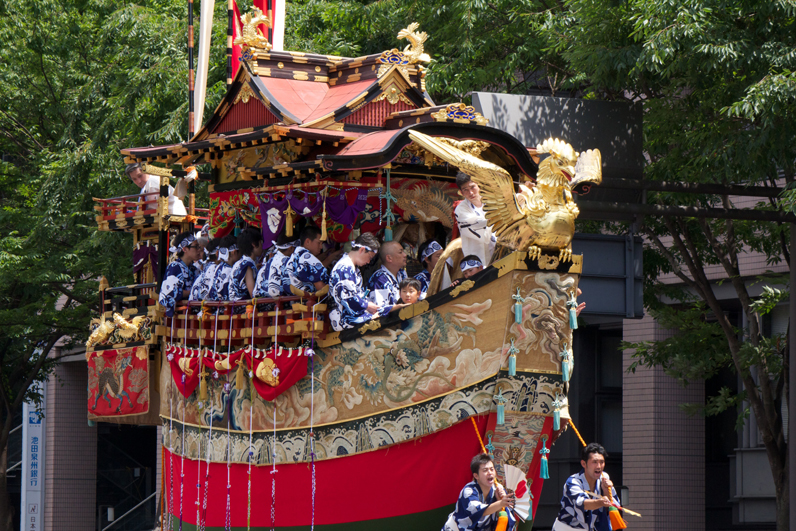
Religion: The Real Architect of Kyoto
During Eiko Ikegami’s annual July pilgrimage to Gion in Kyoto, Japan, the historic district is overrun by Kyoto locals, kimono-clad women and camera-happy tourists who come to admire the giant floats parading through the streets and eat from night stalls serving Japanese cuisine.
The occasion is Gion Matsuri, a month-long festival that dates back to 869, when then-Emperor Seiwa ordered the public to honor the gods to ward off plague, pestilence and other natural disasters.
The Yasaka shrine, which is nestled in Gion’s eastern flank, and the festival, which has run continuously for more than a millennium, have shaped Kyoto’s social and cultural landscape. And, as Ikegami has observed in the city’s narrow, huddled alleyways, and tall wooden townhouses, they have shaped Kyoto’s physical landscape as well.
Ikegami, the Walter A. Eberstadt Professor and Professor of Sociology and History at The New School For Social Research, will discuss the connection between Kyoto’s Shinto roots and the city’s spatial planning in an upcoming lecture, “Gods, Power and Common Folks: City and Religion in Japan,” Wednesday, November 12, 2014, 5:00-6:00 p.m. at the New School’s John L. Tishman Auditorium.
“Gion Matsuri is more than just a religious festival,” Ikegami says. “Both the shrine and the festival are deeply connected with the development of Kyoto’s urban design and the creation and transformation of what it meant for ancient Kyotoites to identify with their sense of being citizens.”
In her discussion, Ikegami, a Japanese native, will share breathtaking sights of Gion Matsuri and discuss the origins and evolution of the world’s longest running urban festival. She will then demonstrate the “deep connection” between the Yasaka Shrine, the Gion Matsuri and Kyoto’s physical landscape.
To illustrate her point, Ikegami conjures an age-old aphorism first spoken by Benjamin Franklin: “In this world, nothing can be said to be certain, except death and taxes.”
“And from the emperor to the common folk, the people in ancient Kyoto were no different,” she says.
Specifically, Ikegami is referring to a special tax-free zone the Japanese Emperor and Shogun created around the Yasaka Shrine—a way, like praying, of appeasing the Gods. Naturally, many citizens of Kyoto took advantage of the benefit, claiming to be tax-exempt “shrine people” and, in the process, creating a densely populated environment (and popular entertainment district) that still exists today. Shinto beliefs and practices have also had the effect of bestowing meaning to places and spaces, creating what Ikegami calls “memory locations” throughout the downtown Kyoto.
Ikegami has observed that when we talk about the relationship between city and religion in the United States, “we often think about questions of immigration and ethnicity.” However, in a more global context—and in places like Kyoto—the very notion of a city was typically intertwined with, and defined by, religion.
“From Europe to Asia and Latin America, religions often played a central role at the very heart of the process of creating and designing the spaces of cities in history,” she says.
To attend the event, see The New School events calendar.